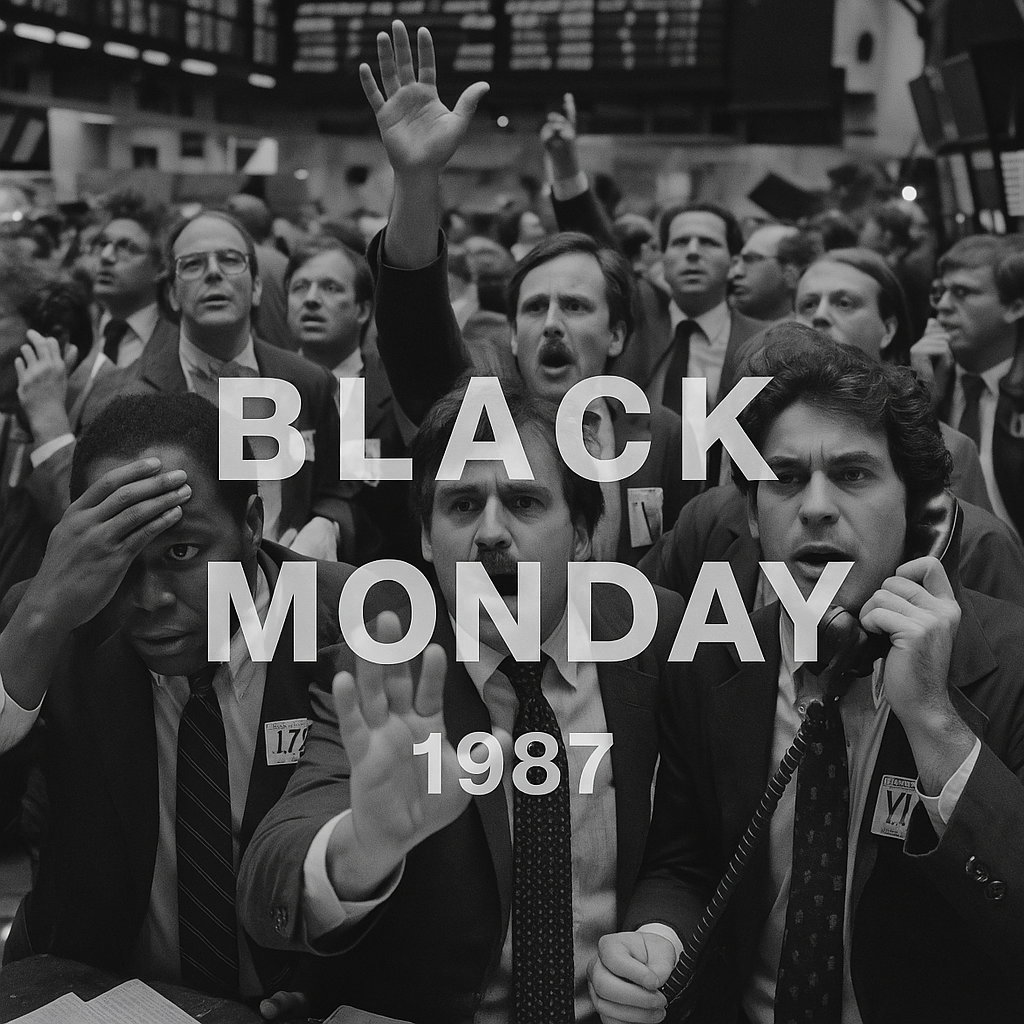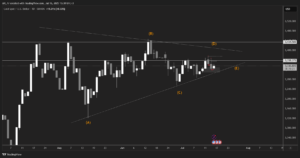In light of recent market developments, I thought, it would be nice to take a trip down memory road, to the origins of the term “Black Monday”
It was a Monday like no other. October 19, 1987, a day that would etch itself into the annals of financial history with all the subtlety of a sledgehammer through a glass window. The Dow Jones Industrial Average plummeted by a staggering 22.6% in a single trading day. To put that in perspective, imagine waking up to find nearly a quarter of your portfolio wiped out before you’ve even had your morning coffee.
This was Black Monday, and it didn’t just rattle Wall Street it sent shockwaves across the globe.
A Calm Before the Storm
Leading up to the crash, markets had been on a tear. The 1980s were marked by a heady mix of deregulation, optimism, and a stock market that seemed incapable of going anywhere but up. Sounds familiar, right?
But beneath that glossy exterior, cracks were forming. Concerns about overvalued equities, rising interest rates, and trade tensions between the US and Germany were bubbling under the surface. And then there was the mysterious new kid on the block: program trading computer-driven strategies that could place massive sell orders faster than you could say “portfolio insurance.”
The Day the Machines Took Over
On the morning of October 19, the sell-off began quietly. But like a snowball rolling down a hill, it gained terrifying momentum. As prices dropped, computer algorithms kicked in, triggering automatic sell orders. This added more fuel to the fire, which triggered more sell orders, and on it went a vicious feedback loop with no off switch.
By the end of the day, the Dow had lost 508 points, a drop that would be equivalent to several thousand points today. Markets around the world followed suit. London fell by over 10%, Hong Kong by over 45% in the days that followed.
It was global. It was fast. And it was brutal.
What Caused It?
Pinpointing one single cause would be like trying to catch smoke with your hands. Most analysts agree that it was a perfect storm of factors:
- Valuation concerns: Stocks were arguably overpriced.
- Interest rate fears: Rising rates were putting pressure on equity valuations.
- Geopolitical tensions: Disagreements over trade policy and the US dollar’s role added to market anxiety.
- New trading tech: Program trading and portfolio insurance were designed to limit losses but in reality, they accelerated the panic.
In short, it was the financial equivalent of everyone trying to leave a theatre at the same time because someone smelled smoke.
The Aftermath
Here’s the twist: unlike the Great Depression crash of 1929, Black Monday didn’t lead to a prolonged economic crisis. In fact, the market rebounded relatively quickly. The Fed stepped in, injecting liquidity and reassuring investors it had their backs. Alan Greenspan, newly appointed as Fed chair, famously committed to providing whatever support was needed to maintain market stability.
That swift, decisive action helped prevent further collapse. But it also set a precedent some would say a dangerous one about the central bank’s willingness to support the markets.
Lessons Still Echo Today
Black Monday may feel like ancient history, but its lessons are evergreen. Markets are emotional. They can turn on a dime. And as technology plays an ever-larger role in trading, the risks of rapid, systemic sell-offs remain very real.
It also serves as a cautionary tale about overreliance on algorithms and the importance of human judgment in moments of crisis. Because when things go sideways, it’s not just numbers on a screen it’s confidence, livelihoods, and stability on the line.
In the end, Black Monday was more than just a crash. It was a moment of collective realization: that no matter how sophisticated the tools, the market is still governed by one primal force fear.
And on that October day in 1987, fear ruled the day.
By James Trescothick
Head of Market Research and Market Analysis
Risk Disclaimer: This information is for educational purposes only and does not constitute investment advice. Financial markets involve risks, and past performance is not indicative of future results. Always conduct your own research and seek professional advice before making investment decisions.





